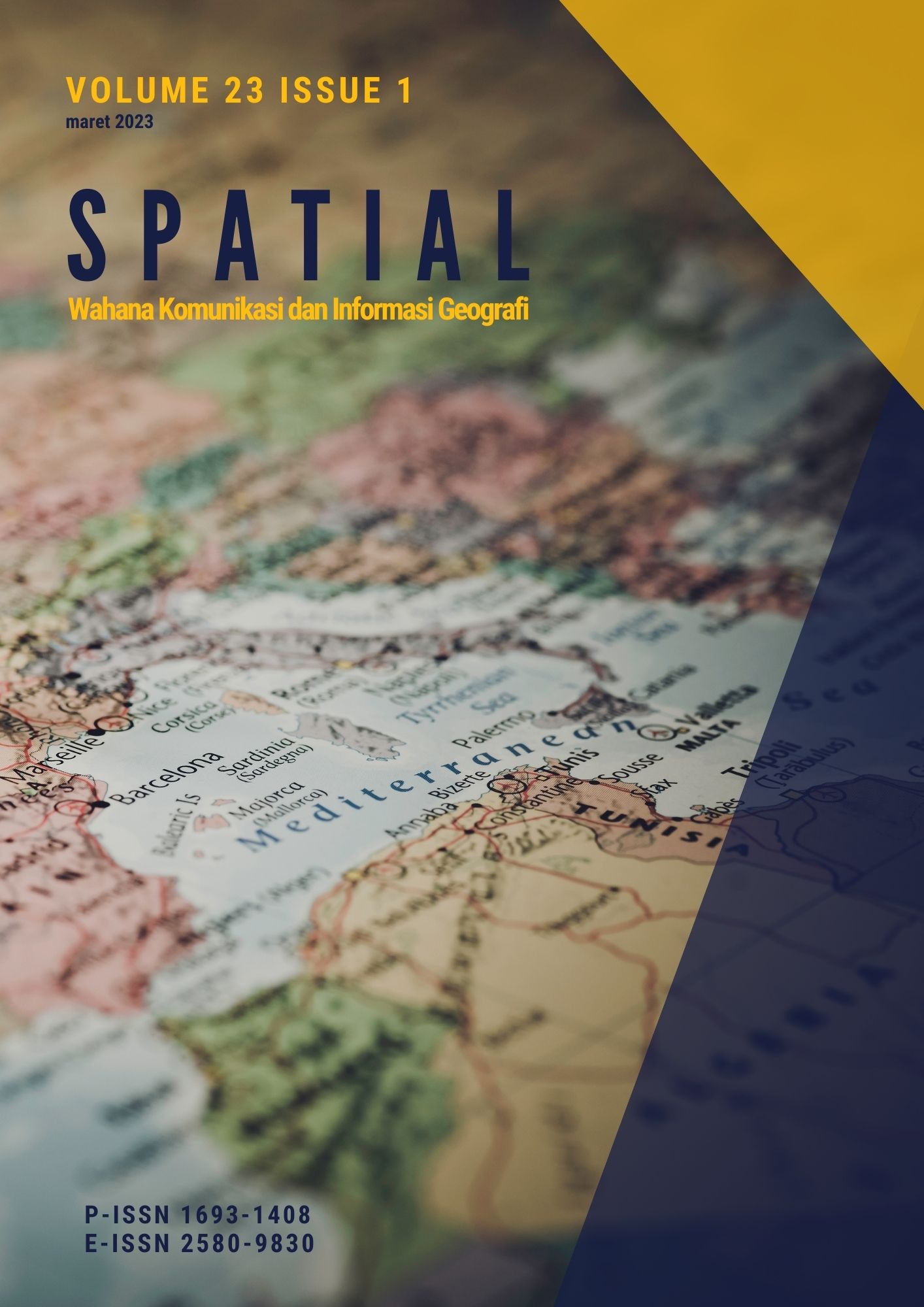Kemampuan Berpikir Kritis Mahasiswa Pendidikan Geografi Pada Implementasi Case Based Learning dalam Mata Kuliah Geomorfologi Dasar
Bahasa Inggris
DOI:
https://doi.org/10.21009/spatial.231.6Abstract
Changes in the paradigm of student center-based learning are starting to take place in Indonesian universities. This is stated and emphasized in the main university performance indicators (IKU7), namely collaborative and participatory classes. At the implementation stage, various types of learning models were developed, but explicitly CBL and PjBL were used as the main raw models. The purpose of this study was to determine the effect of the application of the Case Based Learning (CBL) model on improving students' critical thinking skills. The subjects in this study amounted to 25 people with the type of quantitative research one group pretest and posttest design. The results show that the CBL model is quite effective in improving students' critical thinking skills through calculating the percentage n-gain score of 56.24%. This finding is reinforced by the high positive response of students to the learning model through perception networking through research questionnaires.
Downloads
Published
How to Cite
Issue
Section
License
An author who publishes in the journal SPATIAL Wahana Komunikasi dan Informasi Geografi agrees to the following terms:
Author retains the copyright and grants the journal the right of first publication of the work simultaneously licensed under the Creative Commons Attribution 4.0 License that allows others to share the work with an acknowledgement of the work's authorship and initial publication in this journal
Author is able to enter into separate, additional contractual arrangements for the non-exclusive distribution of the journal's published version of the work (e.g., post it to an institutional repository or publish it in a book) with the acknowledgement of its initial publication in this journal.
Author is permitted and encouraged to post his/her work online (e.g., in institutional repositories or on their website) prior to and during the submission process, as it can lead to productive exchanges, as well as earlier and greater citation of the published work (See The Effect of Open Access).
This work is licensed under a https://creativecommons.org/licenses/by/4.0/









